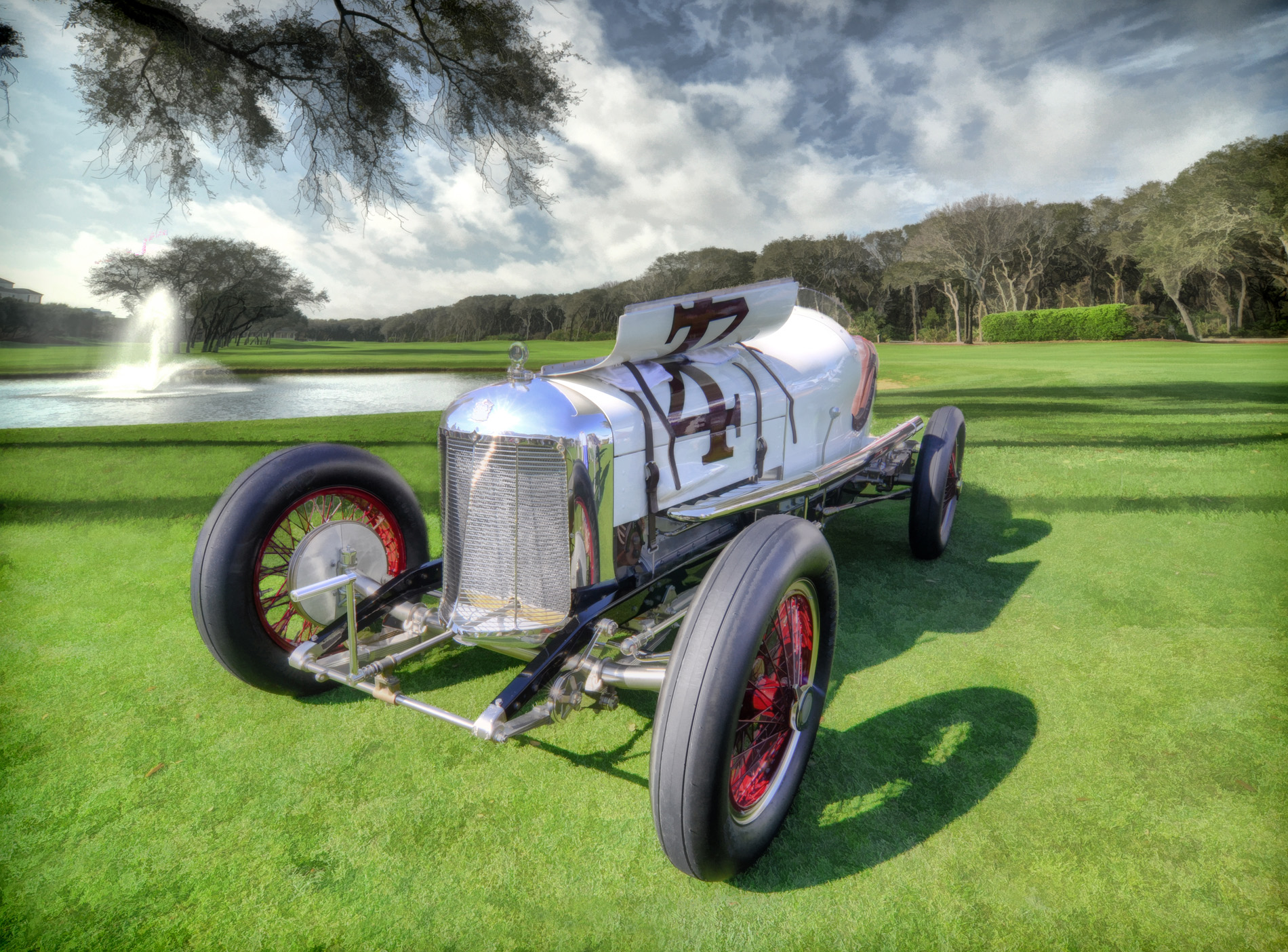
In 1929, the AAA announced the rules for the 1930 Indianapolis race and they became known as the Junk Formula. The rules were created to limit the success of the Miller race cars and create an advantage for the American car manufacturers. A two man car with a much larger engine displacement was the new norm.
Riley Brett, Alden Sampson, Louie Miller, Bud Winfield and others took the challenge to heart and created the first 1930 Miller Sampson Special. It would be a larger racer with the twin Miller 91 front engines mounted side by side, 16 cylinders in a 2,000 pound car.
At Indianapolis in May 1930, Louie Meyer qualified the car second and finished the race in fourth place. Meyer continued to drive the car in 1931 and 1932. Chet Gardner took his place in 1933, 1934 and 1935. In 1935 the twin Miller engines were pulled in favor of the 220 cu. in. four cylinder Offenhauser engine and Gardner finished sixth in that event. Harry Quinn drove the car in 1936 but DNF’d after running out of fuel.
When the car was found in southern California in 1985, it was powered by a push rod Crager-Ford engine. This miller Sampson Special completed a full restoration in early 2014.
Overview
- Production Year: 1930
- Manufacturer: Harry A. Miller Engineering
- Type: Racing car (Open-wheel)
Design and Specifications
- Engine:
- The Miller Sampson Special was powered by a supercharged 4.9-liter (299 cubic inches) straight-eight engine.
- This engine featured advanced engineering for its time, including dual overhead camshafts, four valves per cylinder, and a Roots-type supercharger.
- Output varied, but it typically produced around 300 to 400 horsepower, depending on race specifications and supercharger boost levels.
- Transmission:
- Equipped with a 3-speed manual gearbox, optimized for racing performance and quick gear changes.
- Chassis:
- The car featured a lightweight and durable chassis, designed to handle the extreme speeds and stresses encountered in high-speed racing.
- Suspension:
- Front and rear suspension typically consisted of solid axles with semi-elliptic leaf springs, providing stability and control on both oval and road courses.
Performance
- Top Speed: Capable of reaching speeds exceeding 150 mph (241 km/h), making it one of the fastest cars of its era.
- Racing Success:
- The Miller Sampson Special achieved remarkable success in racing, notably setting numerous speed records and winning prestigious events such as the Pikes Peak Hill Climb and various AAA-sanctioned races.
- Driver Ab Jenkins piloted the car to several endurance records, showcasing its durability and performance capabilities.
Design Features
- Bodywork:
- The open-wheel design of the Miller Sampson Special emphasized aerodynamic efficiency and reduced weight, essential for achieving high speeds on both oval tracks and straight-line speed runs.
- Streamlined body panels and a low-slung profile contributed to its racing prowess and aesthetic appeal.
- Interior:
- The cockpit was minimalistic, focused on providing essential controls and instrumentation for the driver's safety and performance needs during long-distance endurance racing.
Legacy
- Historical Significance:
- The Miller Sampson Special is revered for its technological innovation, racing dominance, and role in advancing automotive engineering during the early 20th century.
- It contributed to Harry A. Miller's reputation as one of America's foremost race car builders and engineers, setting benchmarks in performance and design that influenced future generations of racing cars.
- Cultural Impact:
- The success of the Miller Sampson Special and its records at iconic venues like Pikes Peak and the Bonneville Salt Flats cemented its place in racing history and captured the imagination of automotive enthusiasts worldwide.
- Collector's Item:
- Original examples of Miller race cars, including the Sampson Special, are highly prized by collectors and museums, symbolizing the golden age of American motorsport and engineering ingenuity.
You may purchase a print of the 1930 Miller Sampson Special in our dElegance 2014 online gallery.


